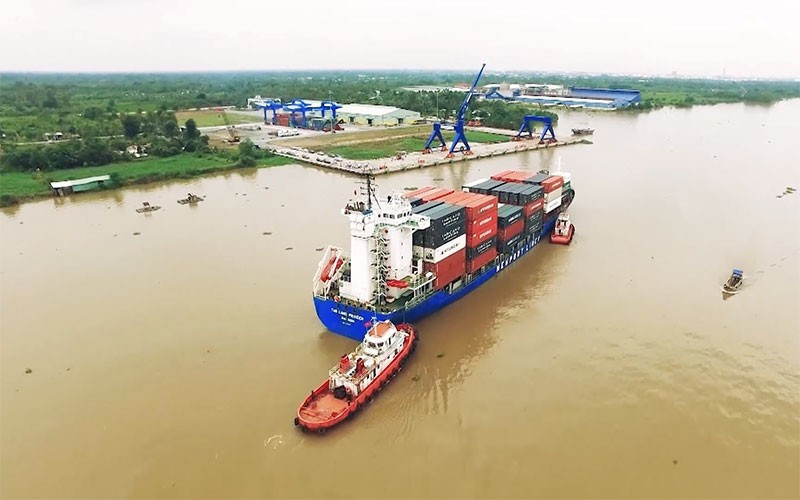Positive signals for logistics sector in Mekong Delta region
The inland waterway transport route (Mekong Express) linking Cai Cui Port (Can Tho) with Cai Mep Port (Ba Ria–Vung Tau) officially commenced operations on May 30. This new route reduces transportation time in the Mekong Delta region from 48 hours to just 15—a 70% decrease.

This development marks a promising shift in the long-standing bottlenecks faced by the logistics sector in Viet Nam’s western region.
Operated by a joint venture between DP World and the Viet Nam Maritime Corporation, the Mekong Express uses barges to take advantage of a shortened distance—from 367 km to just 200 km. This significantly reduces transportation costs for shippers, eases pressure on road transport, and opens opportunities for international connections via Cai Mep Port, offering an integrated logistics service solution.
As Viet Nam’s largest agricultural hub, the Mekong Delta has an annual export cargo volume of approximately 18 million tonnes. However, logistics costs remain a significant challenge, accounting for up to 30% of product prices—compared to just over 12% in Thailand and around 14% globally.
Experts note that the Mekong Delta benefits from a network of ports along the Hau and Tien rivers, as well as five road corridors connecting it with the Southeast region and the rest of the country. These are key strengths in logistics development. However, integrated logistics services connecting transportation and seaports in the region are still lacking. The port system is fragmented, small-scale, and low in capacity—especially the absence of deep-water ports capable of handling export container ships.
The region also lacks railway connectivity, resulting in nearly 70% of export goods being transported to ports in Ho Chi Minh City. Key ports there often face congestion, driving up service fees, warehousing costs, and waiting times—raising logistics expenses by 10–40% for businesses.
In 2015, the Prime Minister approved a master plan for developing logistics centres nationwide to 2020, with a vision to 2030. It designated the Mekong Delta’s central subregion to host a tier-2 logistics centre, covering at least 30 hectares by 2020 and over 70 hectares by 2030. However, years later, the region still lacks a proper logistics hub, and poor transport infrastructure continues to deter investment decisions by businesses.
Under Resolution No. 59-NQ/TW issued on August 5, 2020 by the Politburo, which outlines the development of Can Tho City to 2030 with a vision to 2045, Can Tho is expected to become a regional nucleus city—acting as a centre in many fields, including logistics.
In early 2022, the National Assembly passed a resolution piloting special mechanisms and policies for Can Tho. It includes establishing a centre for agricultural production, processing, and consumption, expected to streamline all stages from harvesting to export. However, by mid-2024, Can Tho had only approved the planning outline and budget estimate—with no notable progress since.
Thus, the launch of the Mekong Express transport route is seen as a bright spot for the entire region. The Government is also investing heavily in key transport projects linking the region through Can Tho, such as the My Thuan–Can Tho Expressway and My Thuan 2 Bridge; the connector from National Highway 91 and the Long Xuyen bypass (An Giang); and the eastern North–South Expressway segment from Can Tho to Ca Mau. Once completed, these projects are expected to shift the bulk of import-export goods through seaports in Can Tho, enhancing regional cooperation and competitiveness.
In 2024, Viet Nam’s logistics sector witnessed a strong recovery, thanks to export growth, government support, investments in logistics technology, and improved global supply chains. According to the World Bank, Viet Nam ranks 43rd out of 155 countries in logistics performance and is among the top five ASEAN countries—after Singapore, Malaysia, Thailand, and on par with the Philippines.
With these new strides, the logistics sector in the Mekong Delta is expected to gain momentum, unlocking the region’s agricultural potential and driving broader economic growth.








